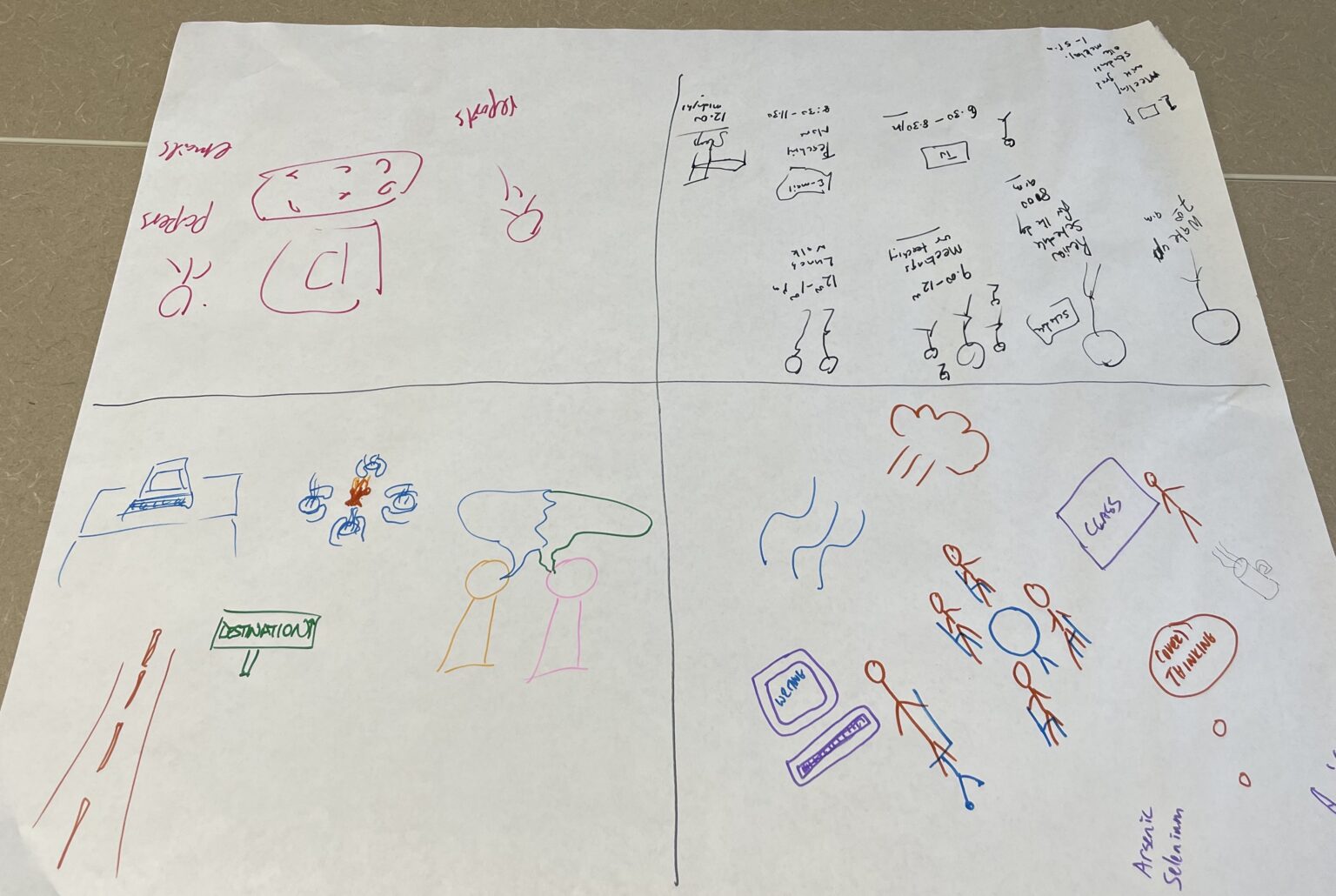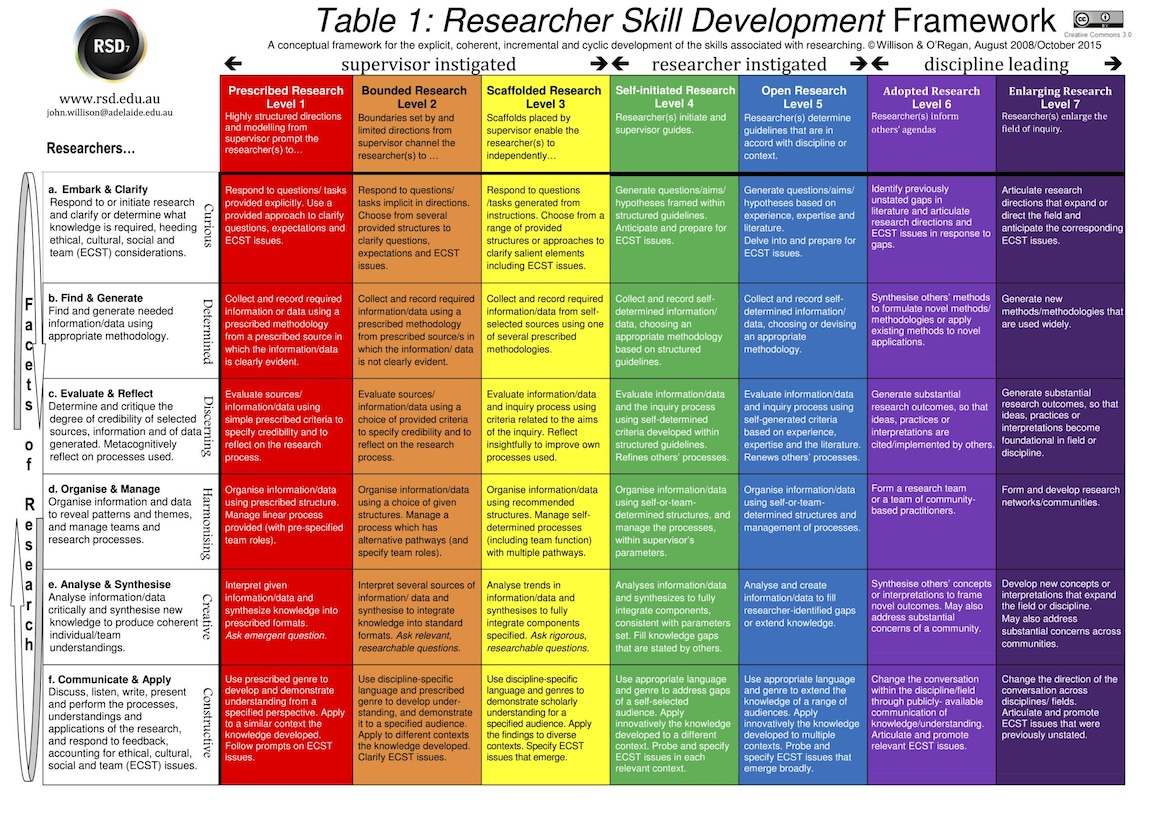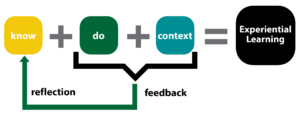Embedding Research, Artistic, and Scholarly Skills: A Step-by-Step Guide for Classroom Success
Elevate classroom success with this guide on embedding research, artistic, and scholarly skills. Gain practical steps to enhance student learning and engagement.
By Gwenna Moss Centre for Teaching and LearningWhether you’re a seasoned educator or just beginning, this blogpost aims to empower you to align your course outcomes with research, artistic, and scholarly work (RSAW). Let’s explore a self-guided journey of instructional alignment using the 7-level research skills framework and the experiential learning cycle.
To undertake this self-guided exploration, you may wish to have the following material handy:
|
Step 1: A Day in the Life…
Grab a sheet of paper and markers, and draw a ‘day in the life’ for you as a researcher, scholar, or artist. What tasks do you take on? How well can you say you do them? What skills do you use to complete them? How did research, scholarly, or artistic skills manifest? Get creative! Use markers, stickers, any supplies you have on hand.

Step 2: Understanding the 7-Level Framework
Now, look at the 7-level Research Skill Development (RSD) framework. What skills do you use in your research life that aren’t captured on the chart? Conversely, what skills from the chart are missing in your day-to-day experience? Use the first colour sticky notes to identify distinct skills and themes across your day. Use one sticky per idea.

Step 3: Examining Skill Progression
The World In/Out graph shows a progression of learning. Larger junior courses are better suited to ‘bringing in the world’ through guest lecturers, case studies, etc. while senior classes are better suited to going out into the world and practicing skills in context. How might you develop a similar progression in your class, so that eventually students develop the necessary skills to be effective disciplinary practitioners? Take one RSAW skill and work backward from proficient to novice. Use the second colour sticky to mark your insights for how students, at the level you teach, might align or work towards proficiency.

Step 4: Aligning Skills with the Experiential Learning Cycle
Make sure that there are opportunities for reflection and feedback throughout the progression of learning. How will students know how well they did something and what they need to improve? Design stages of learning to match the progression of learning. At USask, we have adapted the RSD framework to better highlight the role of reflection in learning. This is available as a word document and via Canvas Commons (log into Canvas before trying this link). The Canvas module includes reflective questions you can embed throughout a research skills development activity.

Step 5: Support and Implementation
Identify one skill progression you want to integrate into your classes and find challenging. Find a colleague and discuss it. Even if they don’t have a solution, normalize talking about teaching and learning, even when we all don’t have answers. Then, try even just one new thing in your course. For example, have students self-evaluate using the RSD framework during your next research skills development activity.

Step 6: Reflection
Reflect on what you’ve gathered during this self-guided study. How will students practice research, scholarly, or artistic skills in your classroom? By now you should have some ideas on how to embed research skills successfully into your classroom and aligning instructional activities within your disciplinary practices. Remember, the key is to create an authentic and engaging learning experience for your students.
Reach out to Mandy Fehr, Coordinator, Undergraduate Research Initiative or Aditi Garg, Educational Development Specialist, Experiential Learning, Gwenna Moss Centre for more help with setting up RSAW in the classroom.
Structure of this article drafted from Mandy and Aditi’s original in-person workshop using OpenAI’s GPT-3.5 language model on November 23, 2023. This article was created with the assistance of AI tools, as described in the GMCTL AI Disclosure Statement.
Title image credit: Pavel Danilyuk from Pexels

